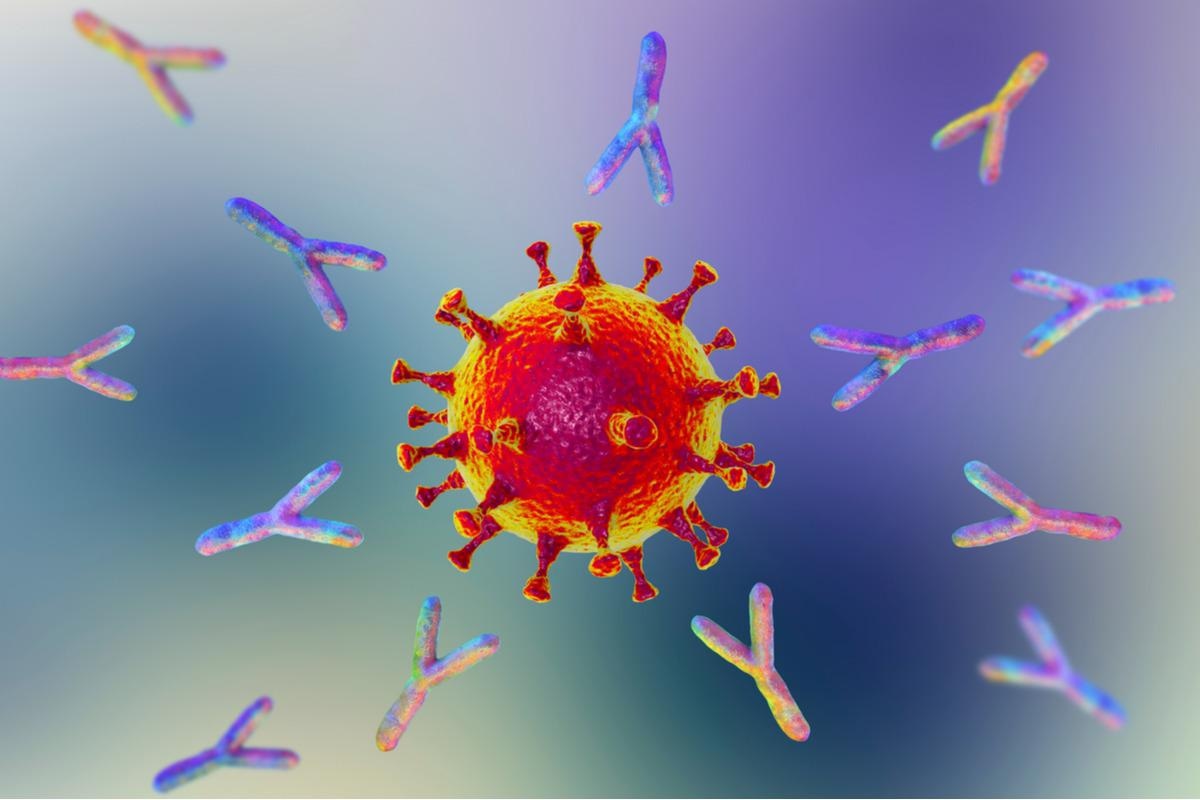In the early stages of the pandemic, it was thought that antibodies produced post-infection with severe acute respiratory syndrome coronavirus 2 (SARS-CoV-2) provide a certain degree of protection against reinfection for at least six months. SARS-CoV-2 is the causal agent of the coronavirus disease 2019 (COVID-19) pandemic. To assess the longevity of detectability, a better understanding of antibody dynamics following infection is required.
Study: Nucleocapsid and spike antibody responses post virologically confirmed SARS-CoV-2 infection: An observational analysis in the Virus Watch community cohort. Image Credit: Kateryna Kon/Shutterstock
In a new study published on the medRxiv* preprint server, scientists aimed at furthering our understanding of anti-Nucleocapsid and anti-Spike responses over time. To do so, they studied both antibody detection and titers to narrow down on factors contributing to seropositivity and waning post-infection.
Background
More information on antibody waning is needed to aid the interpretation of seroprevalence studies, which provide a measure of cumulative incidence, accounting for asymptomatic infections. COVID-19 vaccines only stimulate anti-S. Measurement of both anti-S and anti-N antibodies is required to distinguish antibodies derived from natural infection and vaccination. Seroprevalence studies cannot specify reliably how long these antibodies remain in circulation post-infection. Having this information could be beneficial for modeling approaches influencing the response to the pandemic.
Key findings
The current study investigated anti-S and anti-N trends in individuals with antibody results from 1 to 540 days since PCR confirmed infection. Researchers observed that approximately 4 out of 5 individuals were seropositive for anti-N at any point between 0 to 269 days after testing positive for COVID-19. 35-49-year-olds showed higher odds of a positive anti-N result than individuals aged 18 and 34 years.
The peak proportion in positivity for anti-N and median antibody level was observed to be 120-269 days and 90-119, respectively. Men showed a higher proportion of seropositivity and median antibody levels than women from 120 days onwards. A similar pattern was observed in individuals aged 50 years or above, compared to the younger cohort of 18-49-year-olds. Vaccinated individuals showed a lower median anti-N and higher anti-S 30-269 days post-infection.
Scientists stated that antibody positivity could be influenced by the viral load during infection. The data presented here are from a community cohort study, which means that the symptom profiles could be less severe among the participants when contrasted with hospital-based longitudinal studies.
It was observed that 35-49-year-olds were more likely to be seropositive when compared to 18-34-year-olds. While assessing anti-N responses, scientists observed a difference between age categories 18-49 and 50+ on days 120-269 and 270+. Individuals aged 18-49 years had an earlier peak and antibody waning. Anti-N positivity was observed longer in older people who had significantly more comorbidities and, therefore, had a higher likelihood of experiencing the severe disease.
The proportion of seropositive anti-N samples was 42.6% between days 0-29. This increased to 80% from day 30 onwards. These numbers are lower than other studies that considered hospitalized patients for the study. The difference in anti-N as observed in the data was disaggregated by sex, with earlier peak and waning in females. A meta-analysis showed that men were 2.41 times more at risk of developing severe disease than women.
As Virus Watch is a community cohort study, researchers did not use symptom severity in the analysis. Finally, there was evidence of anti-N waning in both proportions of detectable anti-N in samples and median anti-N titers. This is crucial while contemplating the use of anti-N as an alternative to anti-S for seroprevalence studies in populations with high vaccination rates.
Strengths and limitations
The sample constructed for this study was extremely rich in terms of size and the fact that it spanned various age groups and captured multiple underlying health conditions. A highly sensitive, widely used validated commercial assay was used to note serial antibody measurements.
One limitation of the study is that a large fraction of the data is self–reported and, therefore, amenable to reporting bias. Individuals may only volunteer information they feel is relevant or necessary, thus, limiting researcher discretion. It should also be noted that self-reporting could lead to data entry errors. Next, a large share of the data was collected at registration and did not consider that participants’ health conditions might have changed.
Conclusion
Scientists concluded that seroprevalence studies on anti-N alone may underestimate the true cumulative incidence of infection. They showed a decline in anti-N levels from 120 days onwards and, therefore, provided new insights into the limitations of seroprevalence studies. As the duration of anti-N positivity is influenced by age and sex, serosurveillance might require shorter time windows of testing post-SARS-CoV-2 infection.
*Important notice
medRxiv publishes preliminary scientific reports that are not peer-reviewed and, therefore, should not be regarded as conclusive, guide clinical practice/health-related behavior, or treated as established information.
